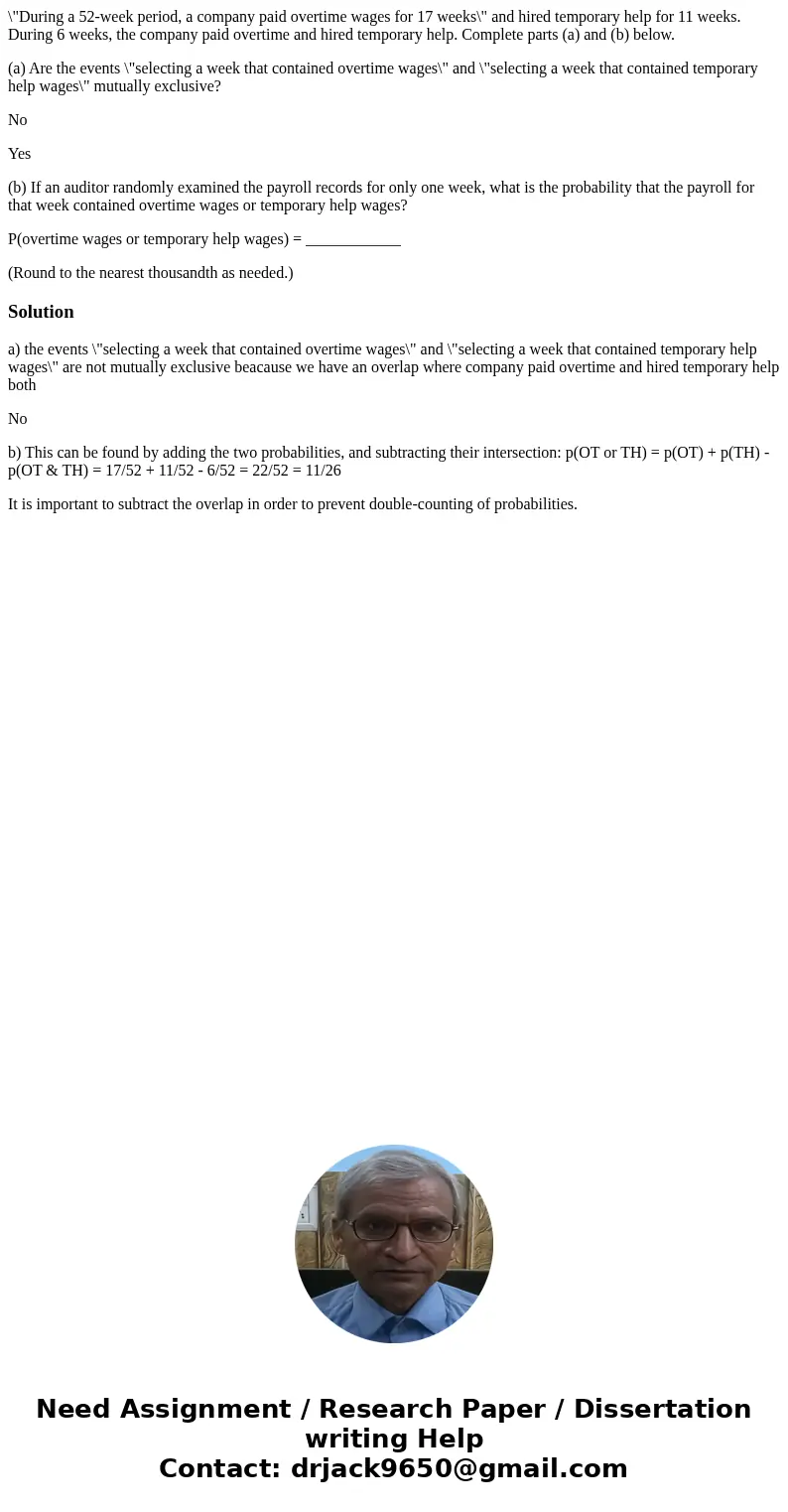During a 52week period a company paid overtime wages for 17
\"During a 52-week period, a company paid overtime wages for 17 weeks\" and hired temporary help for 11 weeks. During 6 weeks, the company paid overtime and hired temporary help. Complete parts (a) and (b) below.
(a) Are the events \"selecting a week that contained overtime wages\" and \"selecting a week that contained temporary help wages\" mutually exclusive?
No
Yes
(b) If an auditor randomly examined the payroll records for only one week, what is the probability that the payroll for that week contained overtime wages or temporary help wages?
P(overtime wages or temporary help wages) = ____________
(Round to the nearest thousandth as needed.)
Solution
a) the events \"selecting a week that contained overtime wages\" and \"selecting a week that contained temporary help wages\" are not mutually exclusive beacause we have an overlap where company paid overtime and hired temporary help both
No
b) This can be found by adding the two probabilities, and subtracting their intersection: p(OT or TH) = p(OT) + p(TH) - p(OT & TH) = 17/52 + 11/52 - 6/52 = 22/52 = 11/26
It is important to subtract the overlap in order to prevent double-counting of probabilities.

 Homework Sourse
Homework Sourse